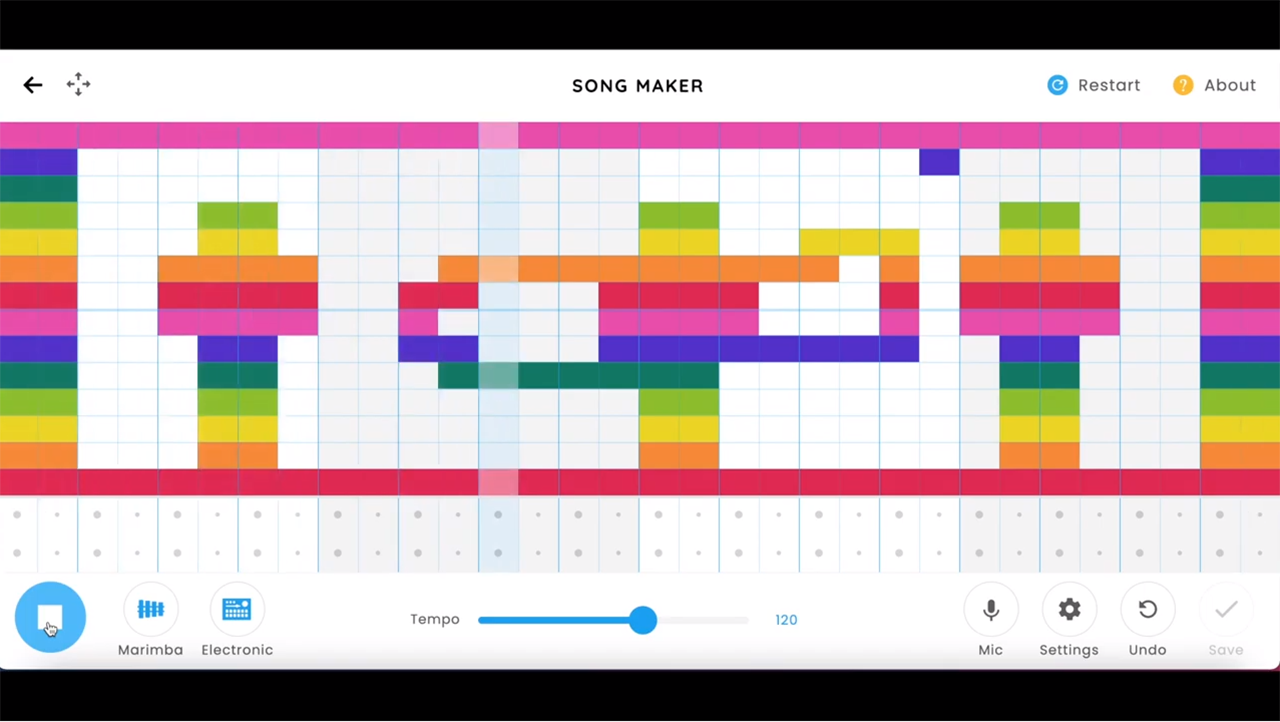In Part One, I talked about my experience teaching music virtually in Boston Public Schools with Social and Emotional Learning (SEL) aligned curricula. In this post, I will talk about what I saw as the major successes in this work, as well as what surprised me. Also I will dive into how has my SEL work this year helped to heal myself and my community.

Part Two
What were the major successes? What surprised me?
In my role as a general music teacher at Adams Elementary: I planned three specific units in the spring semester, Homemade/DIY Instruments, Chrome Music Lab Exploration, and Percussion Crash Course (pun intended). I really only expected these units to be engaging for 2-3 weeks before students tired of them, but surprisingly, all three of them stuck around for 4-5 weeks instead. Chrome Music Lab was the biggest hit. There’s so much to explore, and my third graders kept sending me their projects long after we closed the unit. It’s so validating to know that students are taking things they learn in my classroom and having fun creating music in their free time.
Some of my most creative and fun lessons happened when I let my students take the lead. I always come with a plan and usually make corresponding slides, but sometimes the kids have a different idea of what they want to learn that day. As a teacher, it’s so freeing to throw parts of your lesson plan out the window every so often. When you’re able to do that, it means that your students are passionate, invested in their learning, and looking to maximize their time with you. What more could an educator ask for?
This year, I often felt as though the energy I was putting out didn’t translate across Zoom. I often felt insecure about how tired I was, my level of preparedness, my ability to follow through on plans, the general awkwardness of Zoom teaching, my anxiety, etc. I worried that the lessons I was planning weren’t interesting enough, they weren’t age appropriate, they weren’t SEL aligned enough… the list goes on.
But no matter how unsure I felt about everything I was trying, my students were almost always excited and enthusiastic. They expressed appreciated me as a person, they looked forward to music class every week, they dived headfirst into brand new concepts, they made efforts to continue their music learning outside of class, they wrote me sweet cards, and said things like “I love you, Ms. Akela. I’m going to miss you over the summer.” I was genuinely surprised to get such good feedback, just because virtual learning had felt like such a slog at times, and it was harder for me to see my own success. That’s why children are magic – they never have a problem telling you what they think, and in my case, it was extremely validating and healing.
How has my SEL work this year helped to heal myself and my community?
SEL automatically creates networks of trust and support. If you’re making a genuine effort to be SEL aligned (remember, no one’s perfect), people of all ages will recognize it and hold you up (and vice versa). This is pivotal when trying to be productive during uncertain, scary times such as the last year. My SEL network helped me become a better teacher, a more creative and skilled musician, and a better human.
SEL encourages honest sharing and reflection within a safe space. That means that there’s always time to say what you feel (in a respectful way) or pass, if that’s what you need in the moment. You have time to look inwards and project your findings out into the world. You are heard and seen, even if some people around you don’t necessarily agree with you. You belong to a group. Teachers who create SEL spaces create it not only for their students, but for themselves and everyone else whose life touches your classroom.
SEL breeds resiliency, and resiliency is what brings us through hard times and tragedy. Resiliency builds inner strength, empathy, and conviction, which are all qualities that allow you to heal and care for yourself and others. Resilience is the food of love, art, nature, and all the things that make life worth living.
Our shared resilience
If you take away anything from this article, let it be that last bullet point on resiliency. We all have our pasts, our pandemic stories, our joys, our traumas. We live precarious, diverse, bountiful lives, and no matter our differences, we all continue to exist because the sum of our parts creates a beautiful, powerful, shared resilience. Actively engaging in Social and Emotional Learning in the face of numerous educational challenges was one of the ways I worked to build resilience within myself and my students this year. It took a minute for me to come to that realization, but now that I have, I’m hugely grateful and proud of what my mind and body is capable of.
What about you, your work, your family or your community makes you proud? Where have you successfully built resilience? I encourage us all to ponder these things, but most importantly, I implore us all to have a safe, restful, rejuvenating, and enjoyable summer. We deserve it!
See you in September!
Akela
About Akela
Akela Franklin is a classical soprano, music educator, arts administrator, and animal fanatic. She is a member of CMCB’s Voice and Early Childhood faculty and was recently named as the ECH voice specialist, which involves teaching private voice to beginning students ages 5-7. Akela also serves as a CEP Teaching Artist and instructs Chorus and General Music at O’Donnell Elementary School and Adams Elementary School, respectively.